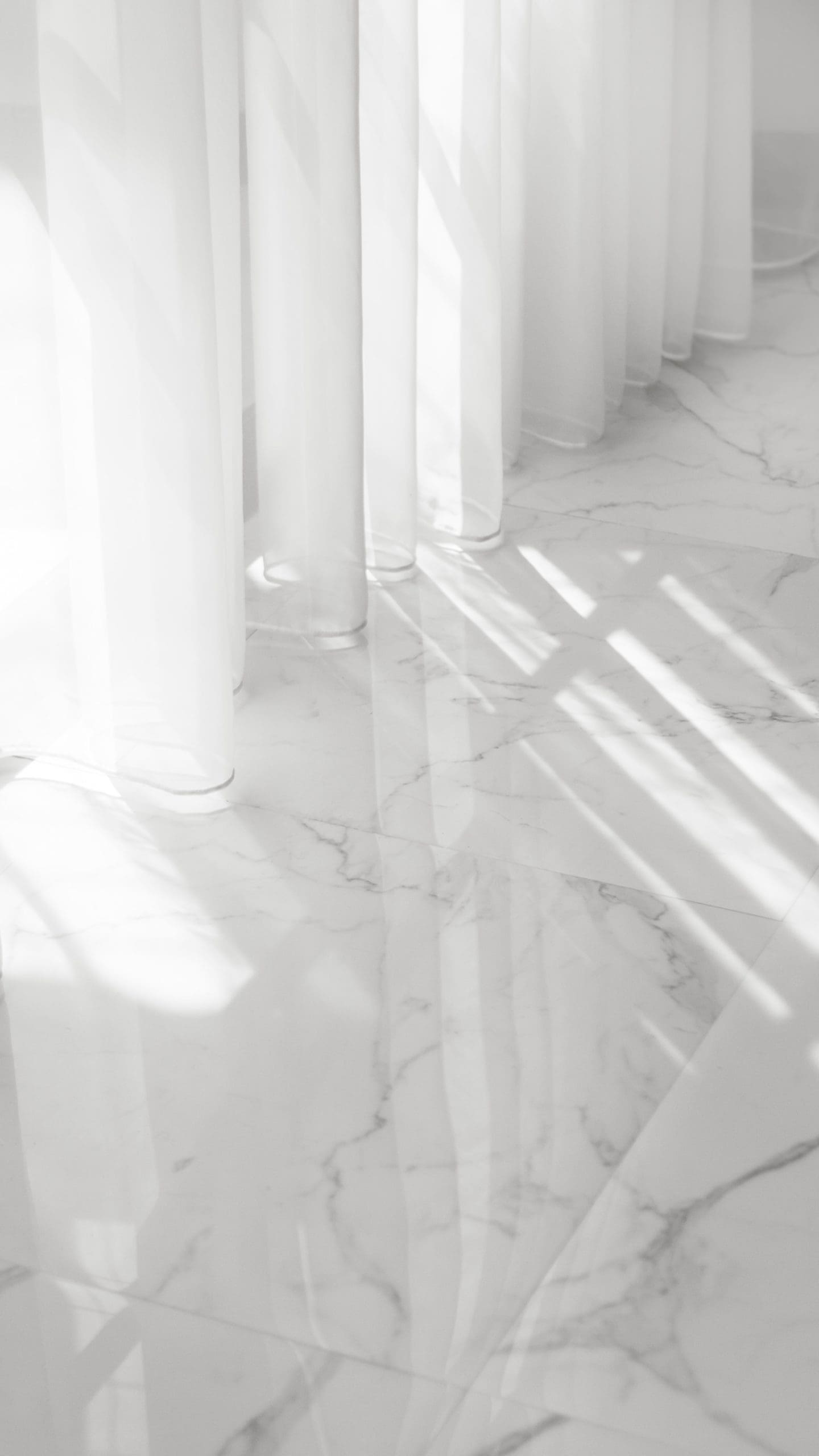Explore budget-friendly options that serve as a great alternative to marble tiles. These materials mimic the luxurious aesthetic of marble and prove to be practical and cost-effective choices for your next home renovation. While marble tiles are renowned for their elegance, they often have a hefty price tag. These materials can be your go-to choice in any type of renovation, i.e., kitchen, or bathroom, office, or outdoor areas. They will ensure that your final look is as beautiful as it would look with marble tiles.
Photo by Hemant Kanojiya on Unsplash
What Is the Difference Between Marble Tiles and Marbleized Tiles?
People don’t usually know that marbleized tiles are not made of real marble. The distinction between marble tiles and marbleized tiles lies in their composition, appearance, and manufacturing processes. Marble tiles are made only from natural marble stone with precision.

Photo by Glen Ardi on Unsplash
On the other hand, marbleized tiles are a man-made alternative that seeks to copy the expensive look of marble through a specialized manufacturing process. Marbleized tiles are typically composed of a base material, such as ceramic or porcelain, that is then treated with pigments and patterns to mimic the veining and color variations found in natural marble.
While marble tiles offer the authenticity of natural stone, marble effect tiles provide a cost-effective option with greater design flexibility.
4 BEST Alternatives to Marble Tiles
Here are the 6 materials that are a better replacement for marble tiles. Some of these materials can create beautiful marbleized tiles that will give the exact look of real marble.
1- Polished Tiles
Polished tiles are a commonly used alternative to marble tiles as these tiles offer a sleek and glossy surface that gives you that classy look of marble. These tiles are typically made from natural stone, porcelain, or ceramic, and their reflective surfaces create an illusion of spaciousness.
Here are two types of polished tiles that are commonly used as alternatives to achieve a marble look:

Photo by Chastity Cortijo on Unsplash
Polished Porcelain Tiles
Porcelain tiles are a popular choice for those seeking a durable and versatile alternative to marble. These tiles are crafted from dense, refined clay fired at high temperatures, producing a hard and resilient material. Porcelain tiles can convincingly mimic the look of marble and can be customized in different colors and patterns. They are resistant to stains, scratches, and moisture, making them suitable for any type of space such as bathrooms, kitchens, and outdoor areas.
Polished Ceramic Tiles
Ceramic tiles provide a cost-effective alternative to marble without compromising on style. These tiles are made from a mixture of clay, minerals, and water combined and then fired at lower temperatures than porcelain. They are relatively lightweight, easy to install, and resistant to wear and tear. Many people get confused when choosing between porcelain vs ceramic tiles for their bathrooms or floors. While they may not be as dense as porcelain, ceramic tiles are still a durable and budget-friendly choice for flooring and wall applications.
2- Laminated Flooring
While laminated flooring is mostly used to give your floors a wood look, it can also be used to mimic marble tiles. Consisting of multiple layers, including a high-resolution image layer of marble, laminated flooring provides a realistic aesthetic. It is a floating floor system, meaning it is not directly attached to the subfloor, making installation quick and straightforward. Laminated flooring is also resistant to scratches, stains, and fading, making it an excellent choice for high-traffic areas.

Photo by Collov Home Design on Unsplash
3- Vinyl Floors
Vinyl flooring is another pocket-friendly and good-quality alternative to marble tiles. Vinyl can convincingly imitate the appearance of various materials, including marble while providing comfort underfoot. Available in sheets, tiles, or planks, vinyl is moisture-resistant and easy to clean, making it suitable for kitchens, bathrooms, and other areas prone to spills. It is also softer and warmer than natural stone, providing a comfortable surface for residential and commercial spaces.
4- Concrete Tiles
Concrete tiles present a unique alternative to marble flooring for an industrial and contemporary aesthetic. These tiles are crafted from a mixture of cement, sand, and other additives, resulting in a strong and visually striking material. While concrete tiles may not have the same level of shine as marble, they offer a modern and minimalist appeal, making them an excellent choice for those seeking distinctive and unconventional flooring or wall tile.
Is It Better to Use Marble or Marbleized Tiles in Kitchens?
If you’re seeking a low-budget option offering high-quality and beautiful home aesthetics, go for marbleized tiles. But if you want a real luxurious look of a natural marble stone then there are many real marble tile options in the market.

Photo by roam in color on Unsplash
Here is a comparison between the pros and cons of marble and marbleized tiles:
Pros & Cons of Marble Tiles
| Pros | Cons |
| Elegance and Authenticity | Porous and prone to staining from acidic substances |
| Variety of Colors and Patterns | Scratch Sensitivity |
| Heat Resistance | |
| Longevity |
Pros & Cons of Marbleized Tiles
| Pros | Cons |
| Cost-Effective | Lack Authenticity |
| Versatile | Less Heat Resistant |
| Durable | |
| Ease of Maintenance |
Conclusion
From the sleek surfaces of polished tiles to the versatility of vinyl and concrete tiles, the budget-friendly options presented here cater to various preferences and practical considerations. Remember that while natural marble flooring offers the high-end look that every home desires, alternatives like marbleized tiles can be purchased at a fraction of marble flooring cost.



